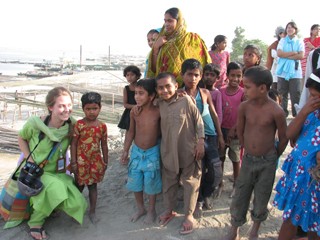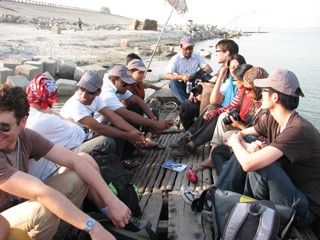Class Trip – to Bangladesh
To help my students in a class on hazards of Bangladesh better understand the country, I am taking them there to experience Bangladesh for themselves.
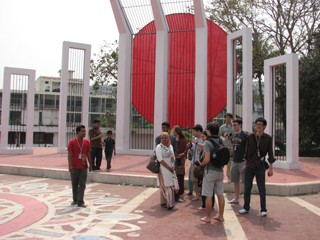
This semester I am doing something new – teaching a class. The course is in the Sustainable Development program and about the multitude of natural and human-induced hazards of Bangladesh. To help them truly understand what “Life on a Tectonically Active Delta” is like, I have brought them here for Spring Break. Now they will get to see for themselves the geology, environment and people of Bangladesh that they have been hearing about in class. This is a new experience for me, bringing 13 undergraduates and my TA for 10-day trip to the other side of the world, both literally and figuratively. Shepherding them around and being responsible for so many students, rather than a few colleagues and graduate students is a daunting task, and made possible only by the support of Dhaka University. With them, we will see Dhaka, including museums and Old Dhaka, the Brahmaputra River and its ever-changing islands, and the Sundarbans, the world’s largest mangrove forest.
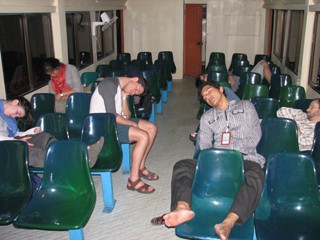
We left on Thursday March 8. I have taken advantage of the large group to transport equipment to Bangladesh. Meeting up a JFK, Scott Nooner and I presented each of them with a box of equipment for Bangladesh and soon the 16 of us with 32 pieces of luggage were on our way. Arriving in Dhaka some 20 hours later at 4 AM on Saturday, our tired group headed to the new Hotel 71 (a tribute to Bangladeshi independence in 1971), stopping for a few sites along the way. After a break for breakfast and showers, we headed off to the Independence War museum where they saw graphic evidence of the events leading up to the bloody break from Pakistan at the cost of 3,000,000 lives. On a lighter note, we were met there by the 9 Dhaka University geology students who will be traveling with us. Then, we all went to the Dhaka University Geology department, my home base in Bangladesh. However, by the time we completed the introductions, and meetings and a visit to the Shahid Minar, we had no time for lunch. We had to get to the dock for our Buriganga river cruise through Dhaka traffic. We would have to settle for snacks on the way. To compensate, we moved up dinner earlier and our hungry group dived into their first Bangladeshi dinner while sailing down river into the wide Meghna River while watching the industrial development and endless brick factories slide by. A relaxing cruise was a great way to start introducing them to Bangladesh after an exhausting journey.
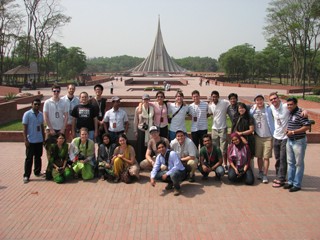
Today, we headed out of Dhaka for the Brahmaputra River, a good thing as a major opposition demonstration is planned for Monday. The 27 of us stopped along the way for the impressive 150 ft. tall National Memorial. Then continued on to lunch at the place we will be staying. There, we were joined by Chris Small, who had arrived earlier, and Hafiz Rahaman, the Khulna University student who works on the compaction meter we installed next to his parent’s home last year. Then across the Jamuna Bridge to Sirajganj, a town threatened by the westward migration of the Jamuna River, as the Brahmaputra is called here. On the spur of the moment, we hired a boat to take us along the embankment, where we could see the ongoing repairs of the collapses from last summer’s floods. Then we walked back, stopping for pictures of the mobs of kids, spontaneous dancing, and a little cricket as we became the highlight of the day. Overall, a great start with many new friendships blossoming between the CU and DU students.
